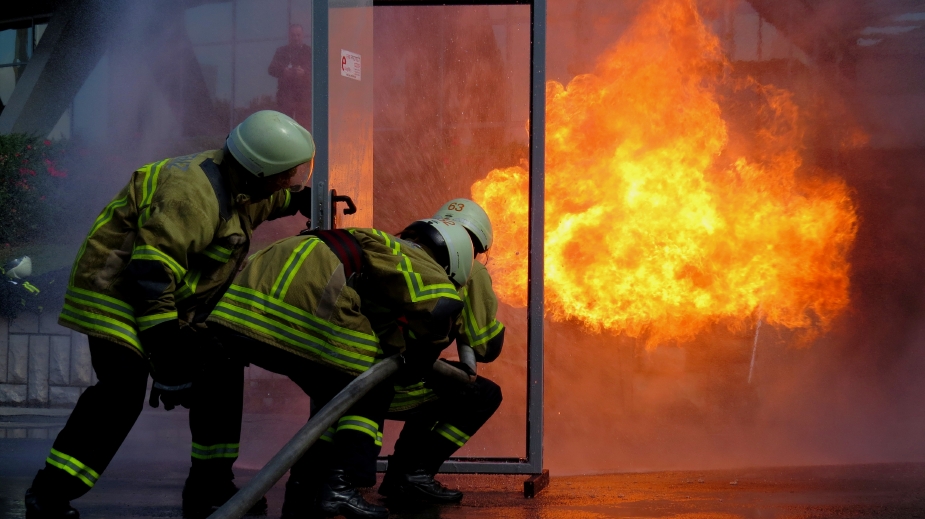
|
Fortunately, no one was bowling—or working—when the bowling alley caught fire, but the business was still a complete loss, and two firefighters were injured. Fires like this occur all over the United States each day, causing billions of dollars in losses. How can you make sure your workplace doesn’t add to the statistics?
Finding the Fire Hazards
The first step to preventing workplace fires is to know what causes them. Maine Municipal Association’s Risk Management Services lists the following common hazards and controls.
Heating equipment, such as improperly installed, operated, or maintained furnaces. Every furnace or heater has minimum clearance distances on all sides and above; make sure to keep material and building components away from this area. Never store combustible material in furnace rooms. And do not use temporary heating units in public buildings.
Electrical. Misused, overloaded, damaged, or improperly maintained electrical equipment is a common cause of workplace fires. Do not leave cords coiled up when plugged in. Only use extension cords for temporary power for equipment in use at the moment. Use multiple outlet strips for computer equipment, not for appliances or other electric equipment. Avoid overloading circuits.
Your one-stop safety management resource, available 24/7. Go here to take a no-cost site tour or here to try it in your own office!
Cooking equipment. Microwaves, coffeemakers, and stoves can cause fires if they are misused. Make sure all break-room equipment is equipped with smoke detectors. Never leave cooking unattended, and follow microwave popcorn instructions carefully.
Mechanical friction. Improperly maintained or cleaned mechanical equipment can lead to a fire. Keep bearings properly lubricated and aligned. And keep conveyors and mobile equipment cleaned and free of accumulations of combustible material.
Housekeeping. Poor housekeeping practices are a common cause of fire. Avoid excessive storage of boxes and other combustible material. Make sure stored material never blocks exits, walkways, electrical panels, or emergency equipment.
Proximity hazards. Watch out for hazards outside buildings, such as other buildings within 100 feet of your site. Other hazards include nearby fuel tanks, Dumpsters, and weeds, grass, and brush.
Great news! BLR’s renowned Safety.BLR.com® website now has even more time-saving features. Take our no-cost site tour! Or better yet, try it at no cost or obligation for a full 2 weeks.
Smoking. If you still permit smoking in your facility you may want to reconsider. Unauthorized smoking or poor setup of smoking areas can put everyone at risk for fire.
Special hazards. Take extra precautions if you have cutting/welding and other hot work that can produce flames, slag, or sparks. Other special hazards include flammable liquid storage and handling; spontaneous combustion from oily rags, chemicals, hay, and leaves; commercial cooking equipment; and liquid petroleum gas (LPG) and natural gas.
Tomorrow, we’ll look at how you can apply your knowledge of what causes fires to stop them before they start.

Chemical processing areas where acids or alkalines are used pose a unique hazard as salt accumulations build on circuits and connections. They form a “salt trail” that is conductive between poles. In wet whether these trail will cause a short and possible fire…keep them clean. We shut off the power to the entire facility every night to avoid a fire from this condition… circuit board/plating shops
Under electrical, please don’t overlook “piggy-backing” multiple outlet strips and only ONE per recepticle.